Globalization has allowed customers to buy anything they want from anywhere in the world.
To reap all the benefits of globalization, however, it is crucial for goods and service providers to fully understand the preferences and needs of their international customers.
In the last few years, surveys have become an established method for gaining insight into global audiences.
If your customers come from all over the world, then providing survey materials in only one language might not be enough. So, you should consider survey translation services.
Surveys are translated into various languages, depending on the target audience. This allows respondents to choose the language they feel most comfortable answering in.
The following blog will help you better understand the importance and benefits of survey translation. What’s more, it offers an overview of the greatest challenges and how to overcome them.
ARE YOU LOOKING FOR PROFESSIONAL SURVEY TRANSLATIONS?
Our team of expert professionals will help you seamlessly translate your survey into 70+ languages with the highest quality and accuracy.
What is survey translation, and why does it matter for global market research?
Survey translation refers to the process by which a single survey is translated into multiple languages spoken among the target respondents.
In global marketing research, survey research is the primary data collection method. It allows for gathering valuable information about customers, their preferences and attitudes, and their consumer purchase behaviour.
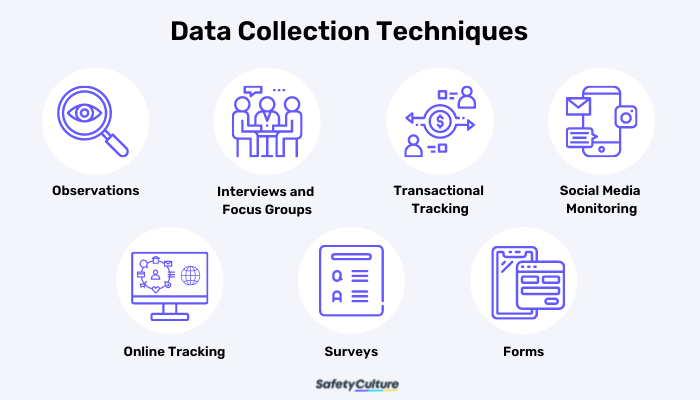
Survey translation is indeed crucial for obtaining such high-quality data while also ensuring inclusivity among all target groups.
What’s more, surveys are a useful tool for navigating your business. The gathered data can show you where you need to make changes to accommodate the needs of your customers.
The biggest benefit of survey research is its flexibility when it comes to its form. We have all taken part in surveys via email, online, or in person.
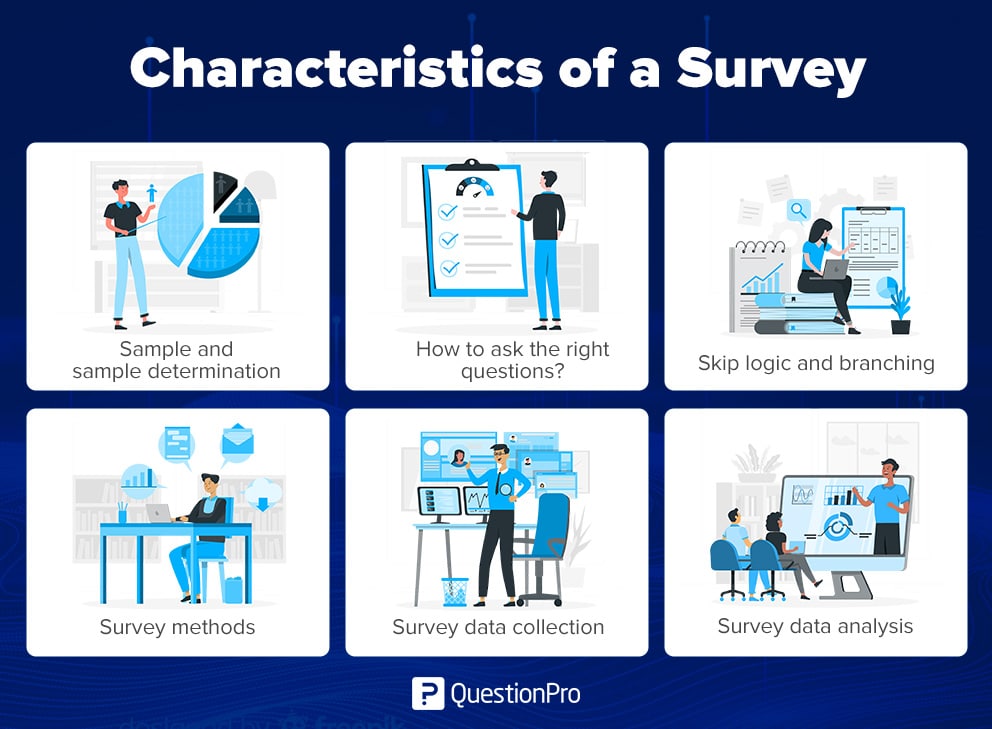
Also read: Top 6 Languages For Your Business
How could we overcome the language barriers in global marketing research through survey translation?
Imagine that you are trying to find out more about how your company is perceived around the world by your international customers. For this purpose, you create a survey with a set of questions.
But if you provide your survey in only one language, you might not be able to draw the broad, universal conclusions you would expect.
Why?
When you try to reach out to a wider, more international audience, you are always faced with the issue of the language barrier.
Indeed, sometimes language barriers exist within the same community or country if there are a few different languages in use simultaneously. A good example would be Switzerland, where German, French, and Italian are widely spoken.
What’s more, things get even more complicated when you take into consideration language varieties, such as Argentinian or Mexican Spanish, or dialects.
Also read: Language vs Dialect vs Accent: What Is The Difference?
These aspects should not be overlooked when devising and translating your surveys. Only in this way can accurate and profound findings be made.
According to research done by the Columbia Business School, language can have a significant impact on consumer behavior: “In recent work conducted in a consumer behavior marketing context, we have found that structural aspects of a language can critically affect one of the most basic aspects of consumer behavior—categorization of products. Grammar, phonology, and semantics are fundamental building blocks of a linguistic system and should therefore have an impact on consumer behavior.”
Providing surveys in the languages of your target audiences reduces the likelihood of misunderstandings and inaccurate data.
What’s more, translated surveys often minimize the survey abandonment rate. When providing the information in the mother tongue of your target audience, the respondents are less likely to encounter unfamiliar words and thus feel frustrated due to a lack of understanding.
Advantages of Survey Translation
Survey translation brings about major advantages, such as
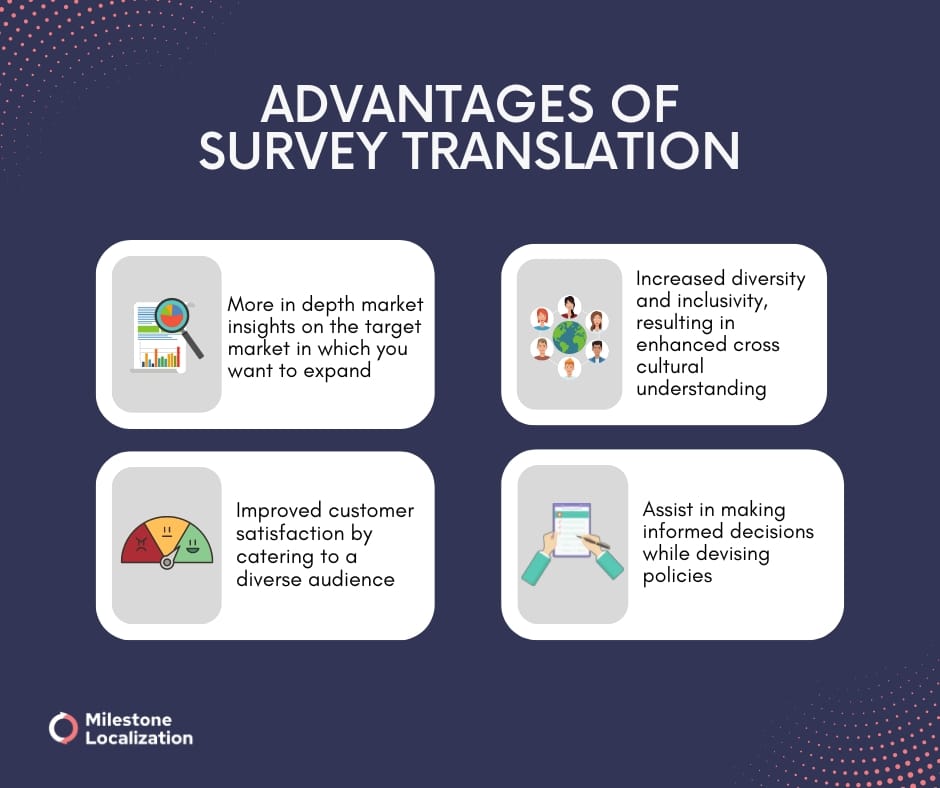
More in-depth market insights
Survey translation can help you explore more in-depth the customer experience of a diverse, multilingual group of respondents.
Survey translation can give you a better understanding of a target market in which you might want to expand. As a result, you would be able to tailor your marketing and sales strategies concerning specific customer segments.
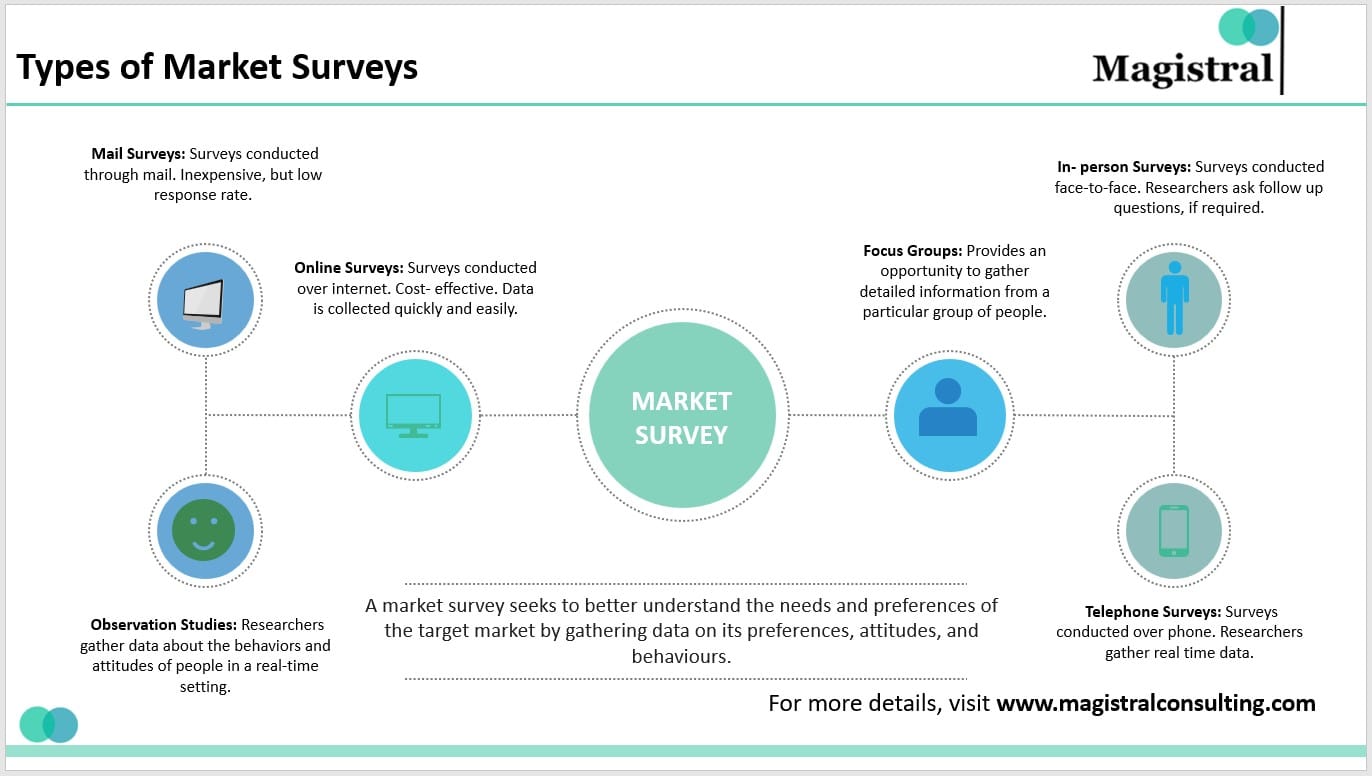
For instance, if you want to offer your products or services in the South American market, you could utilize survey translation to provide your research materials in Spanish and Portuguese.
This would allow you to gather reliable feedback on the customers’ preferences and needs while also learning more about competitors in the market.
Also read: Portuguese vs Spanish: Is Spanish Similar To Portuguese
Increased diversity and inclusivity
In global market research, it is crucial to have a comprehensive understanding of your target groups. This includes being aware of existing tensions regarding social, political, or religion-related issues.
Being aware of the social and political situation in your target market will help you study phenomena such as behavior, attitudes, and interpersonal relationships in more detail.
Awareness of such cultural peculiarities will help you better resonate with the needs of a culturally diverse audience while also enhancing cross-cultural understanding.
Improved customer satisfaction
Survey translation helps you cater to a diverse population, helping you understand your international customers better.
In this way, you can adapt your products and services to the cultural beliefs and special needs of your customers.
Surveys can help you show your customers that you care about them. Fulfilling their wishes, in turn, and granting them an experience tailored to their preferences and needs will guarantee improved customer satisfaction.
Also read: Top Qualities Of A Good Translation
More informed policies
Multilingual surveys can be greatly beneficial in devising your policies.
Indeed, receiving direct feedback on various policies, programs, and services you intend to offer can help you make better, more informed decisions.
For example, if you would like to update your confidentiality policies, a good idea would be to devise a multilingual survey. Once you receive feedback from your international customers, you will be able to better understand the gaps and work towards more inclusive policies.
Challenges in survey translation
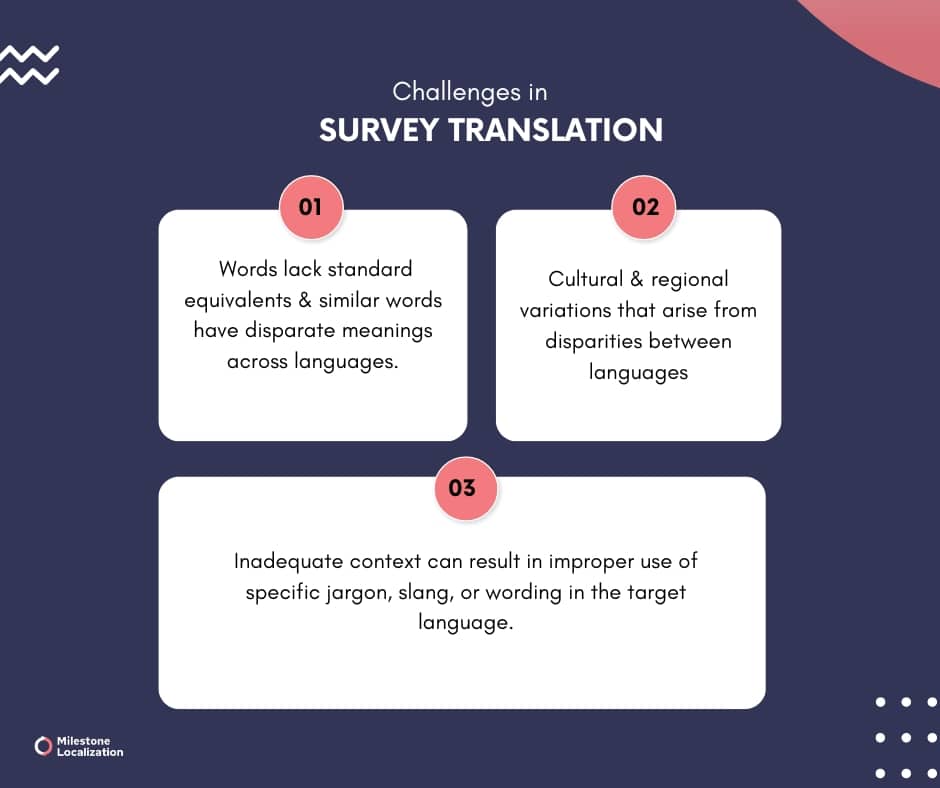
Survey translation has its pitfalls. Bearing in mind that the main goal of any survey is to gather genuine insights, a good translation needs to be able to deliver all the intended information.
However, this might seem easier than it is.
Conceptual variation
Oftentimes, a word might not have a standard equivalent in the target language.
At other times, seemingly similar words might mean completely different things in different languages.
Take, for example, the word “pasta”, which many people associate with Italian noodles. The same word, however, is used in Polish and some other Slavic languages for “toothpaste”.
Another example would be the definition of equality. This term is defined differently in the United States, England, and French-speaking Canada.

Such conceptual variations are among the greatest challenges for survey translation. The tiniest mistake might lead to ambiguity and, thus, provide faulty data.
Also read: 11 Elements To Consider For A Successful Localization Strategy
Culture-related disparities
Cultural and regional variations are yet another stumbling block in survey translation.
Such culture-related variations result from disparities between two languages when it comes to expressing identity or lifestyle.
Unless a translator is well aware of these disparities, they would be unable to translate/ adapt tangible or abstract notions to the target culture.
Most often, cultural variations boil down to certain gaps in the target culture concerning cultural beliefs, education, behavioral norms, customs, etc.
For example, sharing personal information might not be regarded with suspicion in some cultures. Thus, it’s the translator’s job to paraphrase the question in such a way that it does not raise any suspicion.
Also read: Business In Japan: Cultural Differences You Need To Know
Inadequate context
When translating survey materials, it is crucial to provide more information on the intended meaning or message of each item in the survey.
Even the most talented and well-trained translator is prone to inaccuracies if they do not fully comprehend the context. Without a comprehensive contextual background, a translator cannot decide on the appropriate use of specific jargon, slang, or appropriate wording in the target language.
What’s more, if translators need to find out the intended message on their own, a project might take longer than anticipated.
GET YOUR SURVEY TRANSLATED BY PROFESSIONALS
Our team of expert professionals will help you seamlessly translate your survey into 70+ languages with the highest quality and accuracy.
Best practices of survey translation
We’ve already covered all the benefits that survey translation brings. However, to ensure that you’ll enjoy all of them, you must be aware of some tricks that will guarantee you high-quality survey translation.
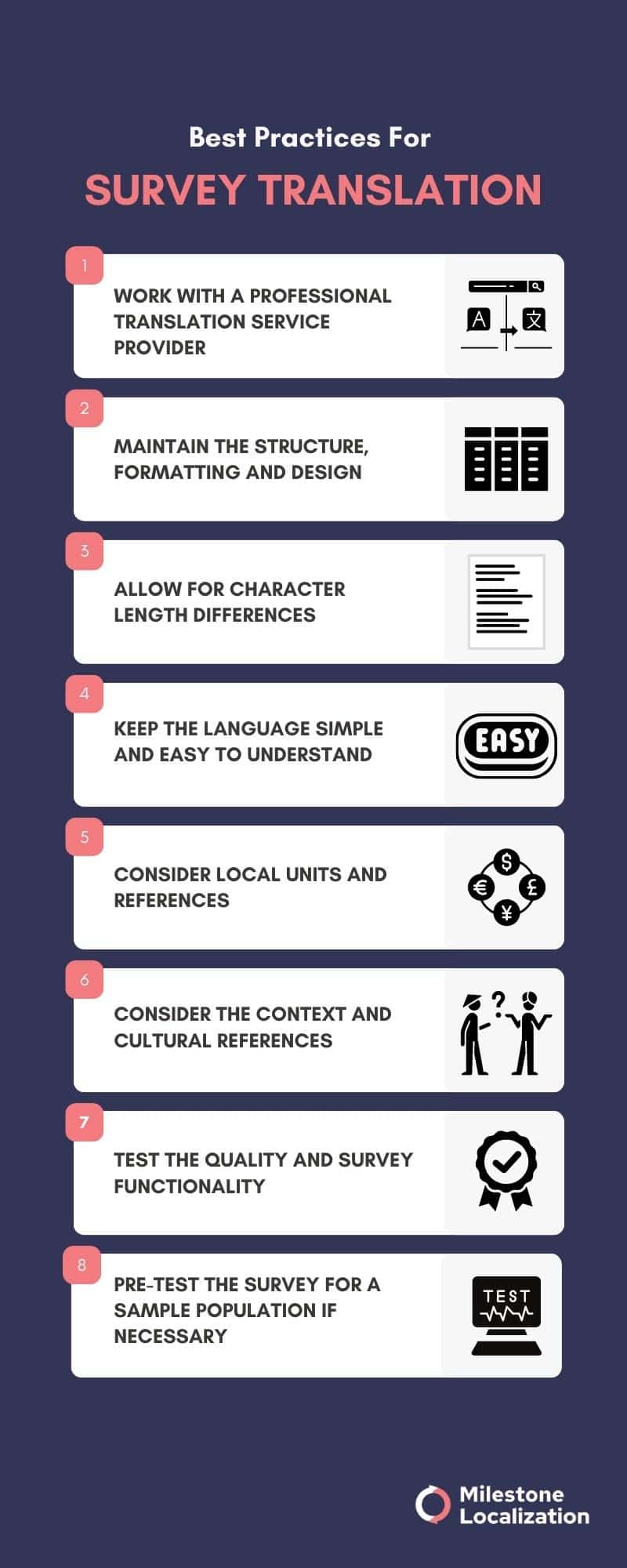
Also read: How to Localize Your App and Reach New Users
Work with professionals
Make sure that you choose a reliable language service provider who will support you before, during, and after your translation project.
People often underestimate the importance of working with professionals. Finding a reliable partner will make a world of difference in the long run.
They will help you find the best solutions for your project in terms of budget, delivery time, scope, etc.
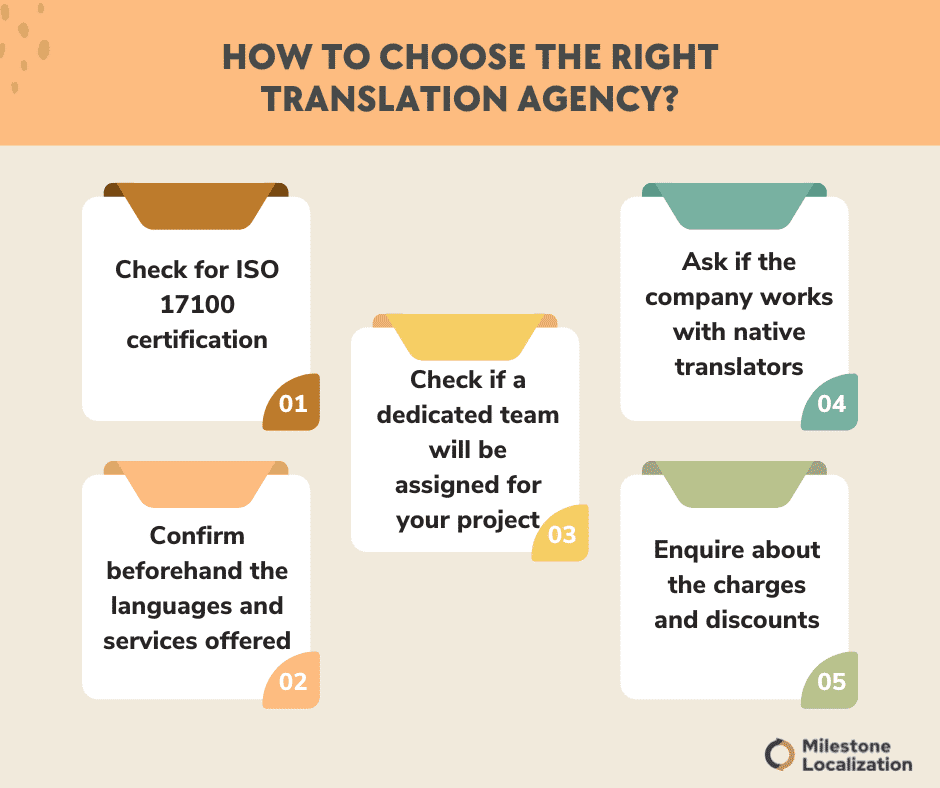
Also read: Top 10 Translation Companies In India
Maintain the survey structure
When translating your survey into different languages, make sure that you keep the formatting and design the same.
Keep in mind that surveys are designed in such a way that the sections and questions flow in a sequential order that makes sense to the respondents.
Thus, make sure that every element of the survey stays where it was and how it was in the source file.
Allow for character length differences
Character length differences, or text expansion are a common challenge in translation. And survey translation is an exception.
Thus, when designing your survey, leave space between the elements. In this way, when translating it and text expansion occurs, you don’t have to worry if there is enough empty space for the whole text.
 Keep the language simple and easy to understand
Keep the language simple and easy to understand
The purpose of every survey is to gather insights. Therefore, it is essential to keep the language simple and easy to comprehend.
In the end, you don’t want to include questions that are so long and complicated that the respondents can’t understand them.
Consider local units and references
You must always keep cultural differences in mind when translating surveys. In some cases, despite minimal language differences between two target locales, you might have to consider other aspects such as units of measurement or data formats.
For instance, if you want to launch your survey in the USA, you have to consider the local currency, data format, units of measurement, etc., which are different from the ones people use in Europe.
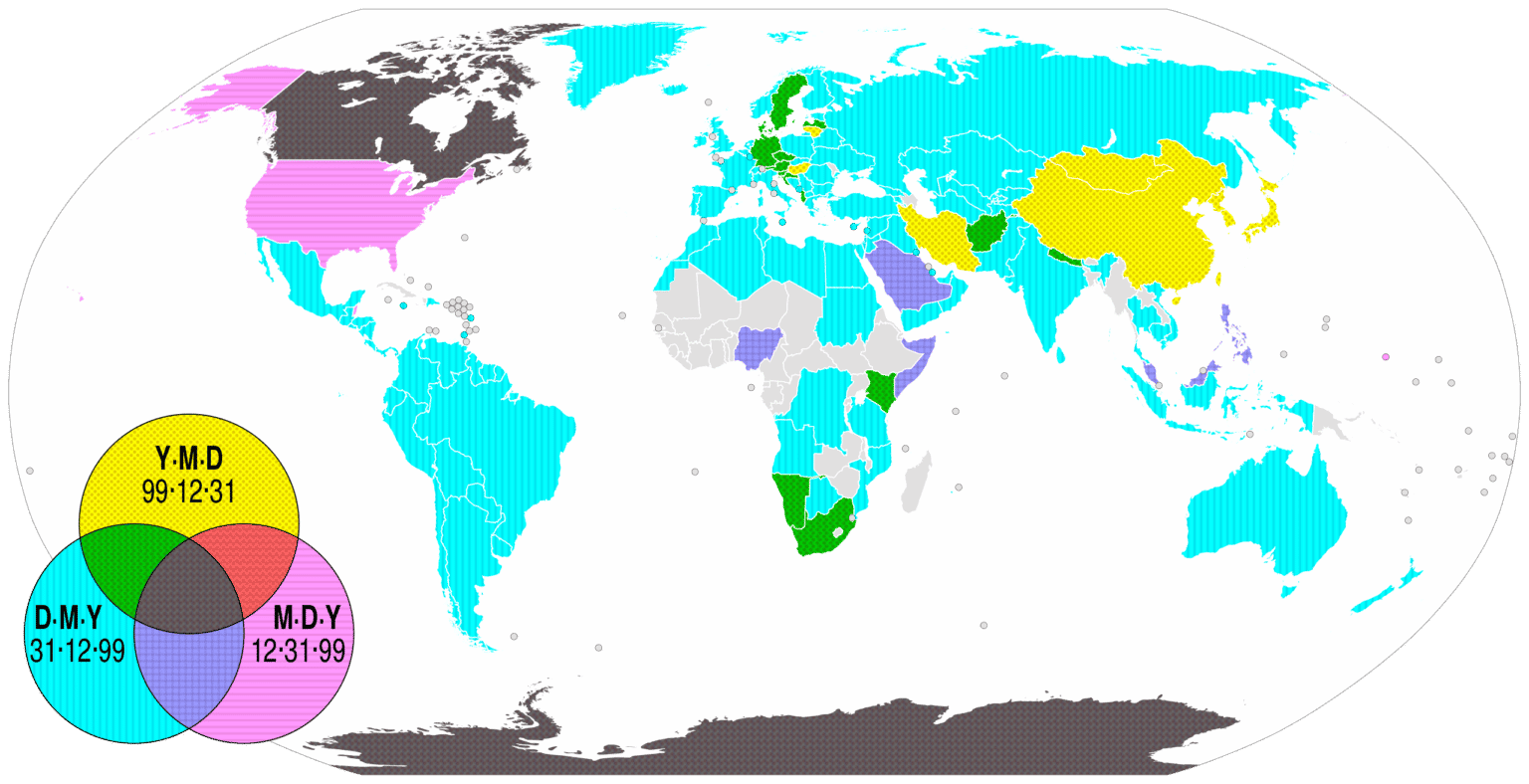
Consider the context and cultural references
In the previous section, we’ve already discussed the importance of context in survey translation. Include information on the audience demographics, level of formality, exact location of the target audience, reading and comprehension level, etc.
The cultural aspect is of crucial importance. For instance, the cultural system of the target market might play a decisive role in choosing the right tone for the message.
What’s more, when sending your survey materials for translation, make sure you provide sufficient information about the role of each item in your survey.
In this way, the translator will know exactly how to phrase the intended message correctly and clearly.
Also read: Localization and Translation Costs : Breakdown Of Factors Involved
Quality assurance and survey functionality
Quality assurance is of great importance to survey translation since it ensures that the end translation is indeed correct.
Quality assurance is the best way to make sure that the intended message is conveyed and is not lost in translation.
Survey functionality, for instance, is a quality assurance method that aims to evaluate if the survey functions properly and if there will be no hiccups once it’s launched.
There are several ways to do quality assurance. Keep reading to find out more about these techniques and their importance in survey translation.
Pretest the survey for a sample population if necessary
If you want to make sure that your survey is functioning properly and the questions can be understood correctly, you could opt for a test run.
In other words, the survey is distributed among a sample population, and once they’ve sent their answers, one can inspect if the obtained data is reliable.
Importance of quality assurance in survey translation
When translating a survey into multiple languages, linguistically and grammatically correct output does not guarantee that all questions will be understood correctly by the audience.
The tiniest misunderstanding of a question might result in faulty, unreliable data.
Thus, quality assurance is of huge importance!
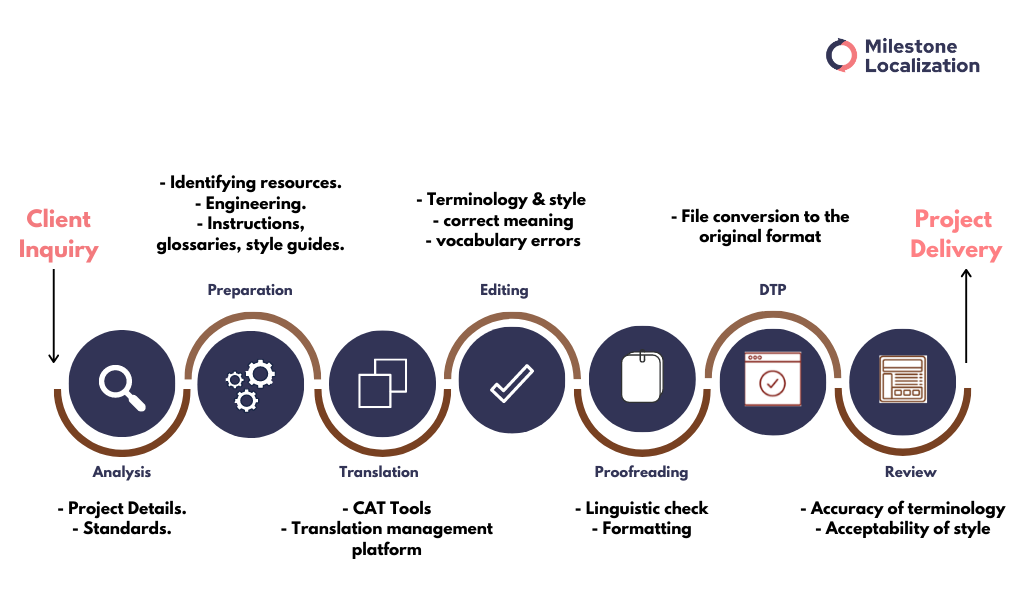
One way is back translation, or the process whereby the translated output is translated back into the source language.
Proofreading by a native language speaker, unfamiliar with the survey and its questions, is another widely used quality assurance technique.
A linguistic check via translation QA tools is another option available.
Overall, any reliable language service provider will be open to discussing their quality assurance methods with their clients, so don’t hesitate to ask!
Conclusion
Whether you are looking for feedback from your global customer base or seeking new markets to expand into, surveys are the best tool to easily obtain the information you need to guide your decisions.
When you deal with a wider, multilingual audience, survey translation can help you reach each target group, regardless of their language and location.
Survey translation is and will continue to be a critical tool in promoting intercultural understanding and communication, helping you make more inclusive decisions based on accurate, representative data.
Also read: Top 10 translation companies in the UK
Connect With Your Audiences In Their Native Language
Milestone helps you seamlessly translate content & localize your website, products, and services for more reach, better conversions, and greater sales.


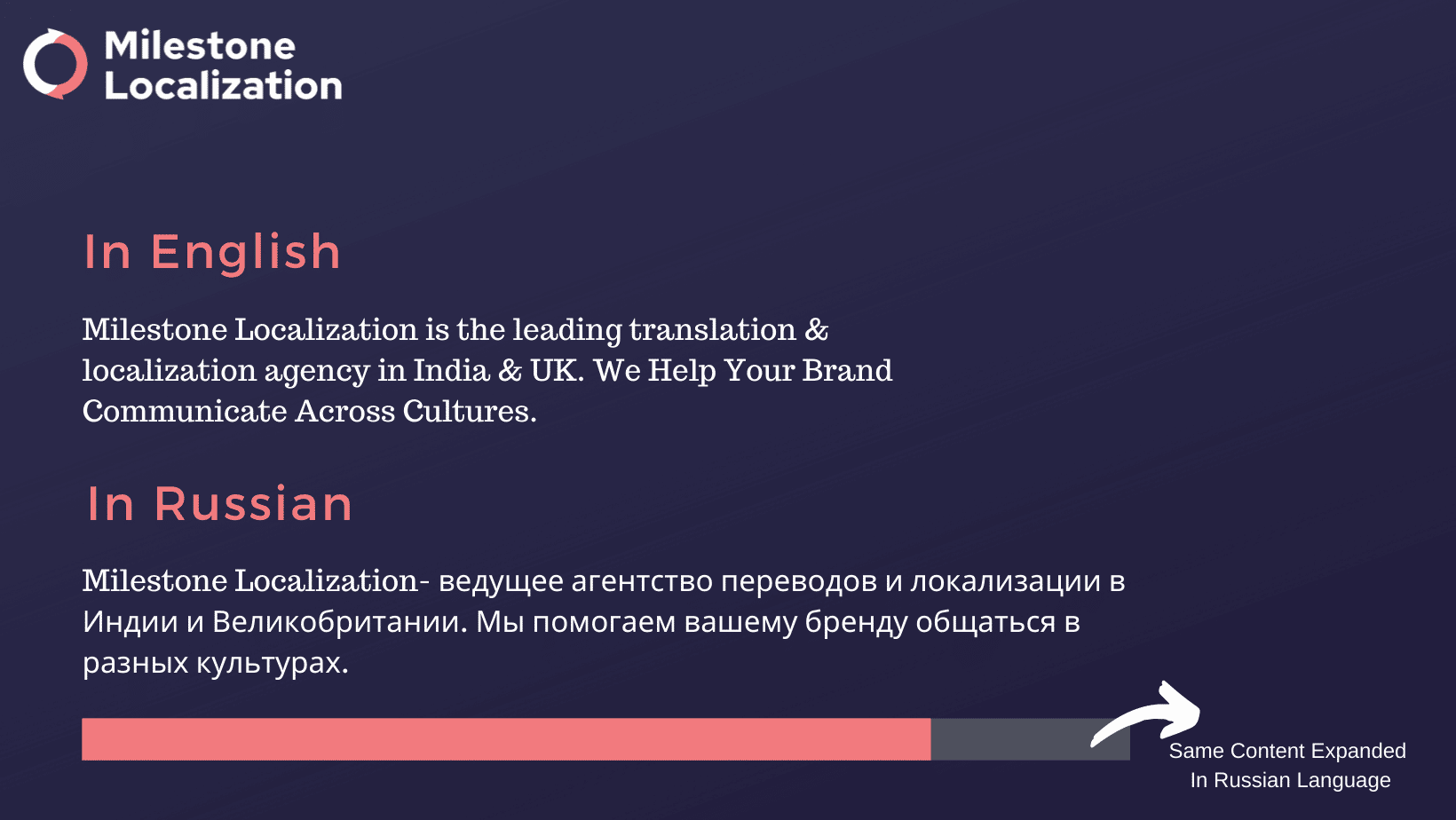 Keep the language simple and easy to understand
Keep the language simple and easy to understand

